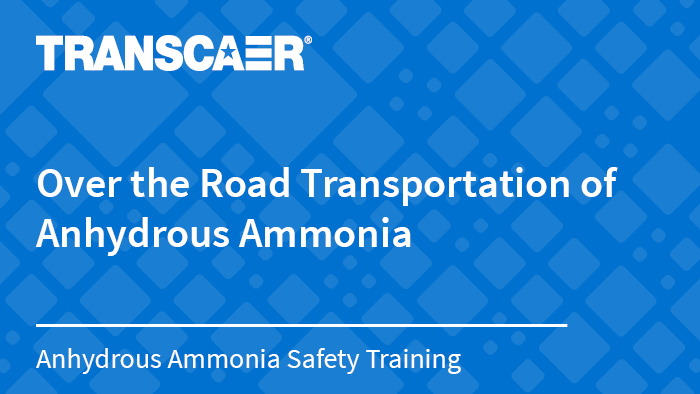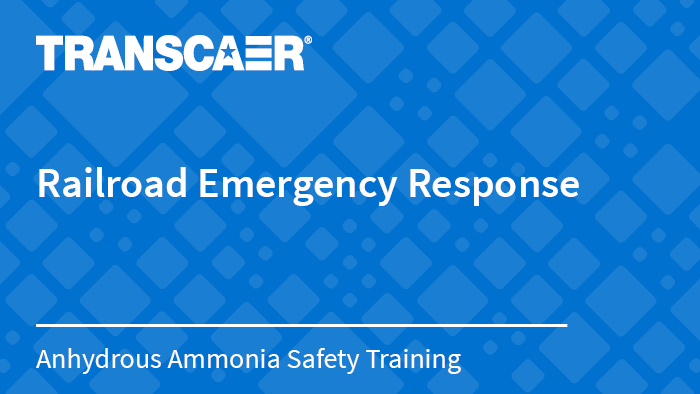The Fertilizer Institute in partnership with TRANSCAER® created anhydrous ammonia safety training videos and documents. This six-part course is designed for emergency responders in communities where anhydrous ammonia is manufactured, stored, or shipped.
I.
Introduction
Overall goals of the training programs are to increase the responder’s awareness and understanding of the risks and potential outcomes associated with an anhydrous ammonia incident as well as enhance their ability to recognize and identify the presence of ammonia in an emergency using current placards, labels, containers, tank construction and other information. The course also helps viewers gain an understanding of the additional resources available, provide basic knowledge of the hazards of anhydrous ammonia and its chemical and physical properties, and perform basic control and confinement operations
II.
Properties
Learn about the uses of anhydrous ammonia, its physical and chemical properties (including pH, boiling point, liquid and vapor density, and expansion ratio), exposure, first aid consideration, and risk-based response decisions and recommendations. You can see images of an ammonia cloud and a tarp and cover control/containment method that can be used for some ammonia release incidents.
III.
Over the Road Transportation of Anhydrous Ammonia
Transports – Transporting Anhydrous Ammonia
Familiarize yourself with the ways anhydrous ammonia is transported. Anhydrous ammonia can be transported by rail, barge, transport trailers, nurse tanks, and straight truck (also known as bobtails).
V.
Overview of Cargo Trailers
This video discusses contacting the railroad in an emergency and accessing railroad resources. It also details how to size up a scene, read shipping papers, gives an overview of tank cars used for transporting anhydrous ammonia by rail.
VI.
Railroad Emergency Response
VII.
Overview of Tank Car
VIII.
Emergency Response
Review the potential release phases that can be encountered when dealing with an anhydrous ammonia release. And learn about plume modeling and weather impacts on ammonia releases, life safety (how to determine and protect downwind threats), environmental impacts and communication issues, and control and containment options.
IX.
Additional Resources
Safety is a top priority for the fertilizer industry. Please use this checklist to serve as a reminder to keep safety in mind when handling anhydrous ammonia. Together we can ensure the continued safety of workers, growers, fertilizer facilities and our communities.
The checklist includes reminders on the following:
- Proper Protective Clothing and Safety Equipment
- Proper Emergency Water Supply
- First Aid and Emergency Treatment
- Proper Handling and Placement of Equipment
- Proper Care When Transporting NH3
- In the Event of a Release
Downloads:







